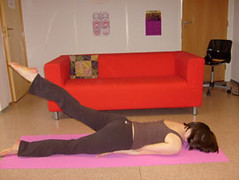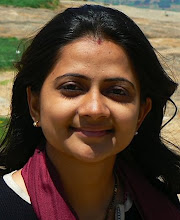Migraine is an intense, throbbing and recurrent headache. It is a hereditary condition and the inheritance is passed down through the females rather than the males. It generally affects one side of the head and often behind one eye and temple but sometimes affects both sides of head accompanied by nausea or vomiting and is particularly sensitive to bright light, loud noises, and smell. This can be cause by the contraction or dilatation of blood vessels in the brain and the irregular nerve activity mainly in the meninges.
Migraine is caused by the stimulation of the trigeminal nerve, which release a substance inducing inflammation and also send messages to pain receptors in the meninges.
Migraine gives a fair warning before striking the patient sees flashes of light or black spots or only parts of the objects in front of him.
Causes : Low blood sugar, allergy infection, excessive intake of certain drugs, nutritional deficiency, consistent over work, improper sleep and rest, excessive smoking , drinking, sexual indulgence, women get migraine around the time of menstruation, after menopause, tension, indigestion, constipation, acidity, stress.
Symptoms : Throbbing pain on one side of the head, A short period of depression, irritability and loss of appetite, pounding pain, nausea, vomiting, numbness, weakness in an arm or leg, laziness, stiff neck, photo phobia, burning & red eyes.
Home remedies for Migraine :
- Migraine relief can be obtained from the juice of ripe grapes. Grind fresh ripe grapes and drink without adding any water.
- Niacin is very useful in reliving pain. Valuable sources of this vitamin are yeast, whole wheat, green leafy vegetables, tomatoes, nuts, sunflower seeds, liver and fish.
- Grind lemon crust and apply on the fore head as a paste this remedy has been found very effective.
- Carrot juice combined with spinach, beet and cucumber juices are very good for migraine treatment.
- Eat 10-12 almonds for a migraine headache.
- Nasyam : Make a solution by adding half a teaspoon mustard seeds powder and three teaspoons water, put in the nostrills. It helps to decrease the migraine headache.
- Take few leaves of the cabbage crush them, and place in a cloth and bound on the forehead at bed time or convenient during day time. The compress should be renewed when the leaves dry out.
- Primrose oil is considered to be one of the best home made for treating migraine.
- Garlic is detoxifier and also best for this. You can go for taking raw garlic and can also go for cooked garlic in various forms.
- Drink chamomile tea everyday as this will reduce migraine.
- Luke warm water enema cleans up the bowels and hence removes the toxins.
- Make a paste of freshly ground sandalwood and apply to the fore head, let it dry and rub off it by hand and wash it.
- Aromatherapy : Take some aromas that stand out of rest of all these include peppermint , sandalwood, lavender and eucalyptus. These all herbs as essential oils are best for migraine put them in cloth, dip it into the solution and then place it at affected area head.
- Acupressure : study some acupressure points and then try it on yourself.
- Massage : Massage your head in a particular way with certain Ayurvedic massage oils. This will not only give you relief from the migraine but will also nourish all of your senses.
- Meditation : Meditation plays an important role in treating any kind of "head" disorders like anxiety, tension, depression, proper meditation will not only cure the migraine but will also reduce the chances of recurring.
- Breathing exercise : some breathing exercise can help in enhancing the oxygen supply to the body. Proper breathing exercise relax a person and increase the flow of oxygen to the brain, helping in getting rid of severe migraine.
Advice for Migraine :
- Do not take heavy and spicy food stuff.
- Avoid unwanted stress.
- Tie a tight cloth around the head.
- Avoid chocolate, aged cheese, red wine, citrus fruits. These foods all contain tyramine or other histamines which have been shown to begin migraine.
- Try to avoid direct sunlight. Sunlight irritates the eyes and so worsens the case of migraine.
 When Shalabhasana is practiced with both the legs raised together, it is called "Purna Shalabhasana". There are two variations of this asana. Below both the variations are explained.
When Shalabhasana is practiced with both the legs raised together, it is called "Purna Shalabhasana". There are two variations of this asana. Below both the variations are explained.




